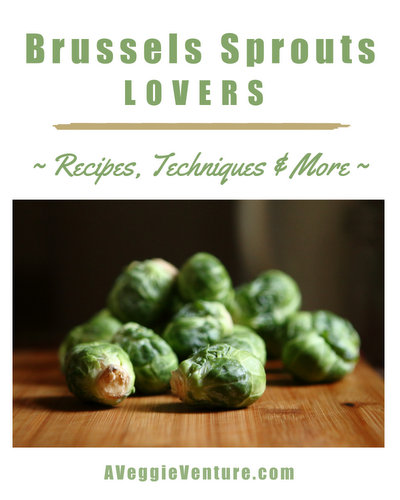Day 213: Light Vegetable Stock Recipe ♥
 Vegetable stock seems such a waste!
Vegetable stock seems such a waste!In my kitchen, chicken stock simmers away every couple of weeks where vegetable stock appears maybe (maybe) every couple of years.
And I know why:
- Chicken stock extracts the last bits of flavor and value from a roasted chicken - leaving feelings of virtue and thrift, like getting something for nothing in the waste-not-want-not fashion
- Vegetable stock takes all those perfectly lovely vegetables bought specially for stock and then leeches out all the vitamins and sucks out all the flavor -- and then you throw them all away!! Talk about guilt! (Hmmm. Maybe a compost pile is in order?)
So here's the first batch. All 22 cups went into freezer bags so taste reports must follow. That said, the sample spoonful was fragrant and a lovely gold color, an apparent keeper.
Now if I can only get over the idea of "wasting" all those glorious vegetables!
RECIPE for LIGHT VEGETABLE STOCK
Hands-on time: 15 minutes up front
Then: 2 - 3 hours on the stove unattended once a simmer's been reached
Then: 15 minutes to drain and package
Makes 22 cups
Then: 2 - 3 hours on the stove unattended once a simmer's been reached
Then: 15 minutes to drain and package
Makes 22 cups
7 quarts water
Peels from 2 potatoes (a great excuse to make Mashed Potatoes & Carrots)
1 1/2 pounds carrots (about 10 large), peels on, cut in 1 - 2 inch pieces
2 turnips, peels on, cut in 1 - 2 inch pieces
4 celery ribs, cut in 1 - 2 inch pieces
2 heads garlic, skins on, halved cross-wise
24 sprigs of cilantro (about a half bunch)
8 sprigs of fresh parsley
1 tablespoon kosher salt
2 teaspoons dried thyme (see ALANNA's TIPS)
2 teaspoons whole black peppercorns
Bring the water to a boil in a very large pot or two Dutch ovens over HIGH (or the hottest temperature your stockpot can manage). While the water comes to a boil, add the vegetables as they're prepped. Cover. (See TIPS.) Once the water reaches a boil, reduce the heat to MEDIUM and let simmer for 2 - 3 hours. Pour stock through a colander and transfer into storage containers (see TIPS).
ALANNA's TIPS
MORE FAVORITE RECIPES
~ Homemade Vegetable Bouillon ~
~ No-Waste Leek Stock ~
~ more vegetable stock recipes ~
from A Veggie Venture
~ Homemade Chicken Stock ~
~ Turkey Stock ~
~ more stock recipes ~
from Kitchen Parade, my food column
~ Homemade Vegetable Bouillon ~
~ No-Waste Leek Stock ~
~ more vegetable stock recipes ~
from A Veggie Venture
~ Homemade Chicken Stock ~
~ Turkey Stock ~
~ more stock recipes ~
from Kitchen Parade, my food column
NEVER MISS A RECIPE! For 'home delivery' of new recipes from A Veggie Venture, sign up here. Once you do, new recipes will be delivered, automatically, straight to your e-mail In Box.
© Copyright Kitchen Parade 2005





Hi Alanna,
ReplyDeleteWhat perfect timing! I am working on a short post about that Summer Harvest Soup of mine that is now going to make yet another appearance in its Fall Version. I am getting some inks together and ended up here. Wonderful, as I plan to mention that someone commented that they made my recipe but with vegetable stock and it was great. Now I can point interested readers to this fabulous posts if they want to try making their own but have no idea where to start. Thank you! : )
thank you for the recipe! my sister keeps an old net-bag (like you get some vegetbales in) in the freezer & puts veggie scraps in it. when it gets full, she makes stock. Scraps like the ends of zucchini/carrots, onion/garlic skins, the kinds of things that you normally throw out but are edible.
ReplyDeleteI started that awhile back, with cottage cheese containers but they were way too small and I forgot to keep it up. I'm thinking gallon-size freezer bags, what do you think, Anonymous?
ReplyDeleteI luv making my own veggie stock, but I feel guilty about just tossing the veggies away. Anyone have an idea of what to do with them?
ReplyDeleteWe don't "waste" vegetables to make stock. Instead, everytime we make a dish that has veggie bits and pieces (like onion ends, carrot stubs, unused bits of broccoli, yada yada...) they go into a ziploc freezer bag in the freezer. When we have accumulated 3 or 4 large bags full, they go into a big stock pot with a half-dozen bay leaves and we make stock out of them. You don't need a recipe and the flavor is always outstanding.
ReplyDeleteCan't be a gourmet vegetarian without a good veggie stock!
Hi Chris ~ That's such a great tip, one I've gotten from several people. And I always have such good intentions as I peel and trim for supper vegetables. I even once got so far as starting a bag -- and then an ice storm hit and the house lost power and whoosh, into the rubbish bin went that lovely little bag of vegetable scraps. Thanks for re-inspiring me!
ReplyDeleteAlanna, when you are making light vegetable stock, I know it hurts to throw away the veggies after cooking so why don't you put them in the food processor and process them very fine. Then I keep a small bag out to mix in my little dogs food and the rest I put on a cookie sheet in a low oven and dry them out and put them in the bird feeder in my yard. The birds eat anything.
ReplyDeleteWe had steamed artichokes with dinner tonight. I'm wondering - do you think the tough leaves you don't eat could be used in stock?
ReplyDeleteAnonymous ~ Y'know, I just don't know. I don't have enough experience with artichokes to say for sure. Did you try it?
ReplyDelete